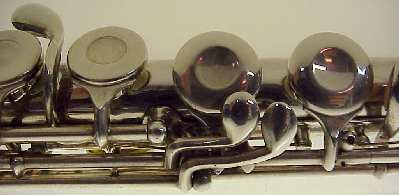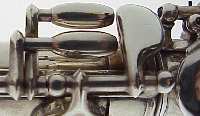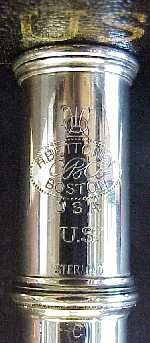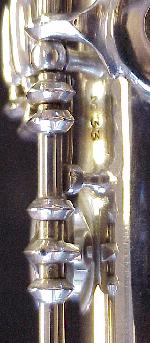





The large rectangular but resistant embouchure and light tubing give this flute a robust, dark first octave and a very sweet high range. Thankfully, she plays easily at A=440.




The former owner traveled the world as a
professional
flute and piccolo player. She sold this flute when she entered a
retirement home in the Appalachian mountains.
 
M33 These two images are of a solid silver Bettoney made for the military ("U.S." engraved on barrel) with M33 marking on all sections. I assume a milspec (military specification) series was commissioned at some point, without serial numbers. It is much like the one listed above (without the C# trill, knuckle wart or palm crutch) except the keywork posts are soldered directly to the tube. Not surprisingly, it is much lighter (457g) despite thicker tubing (.018" head and body), and the headjoint tenon diameter is one of the largest I have run across (so far). The former owner's father acquired this flute while in the military when older instruments were sold off at Fort McClellan, Alabama. I would love to hear from anyone out there who has a clue when this "strapless" puppy was made! |
Images © J.
W. Sallenger